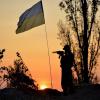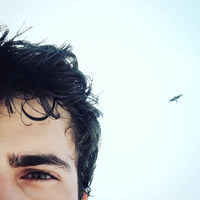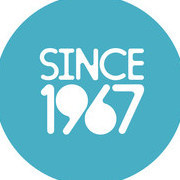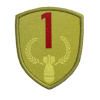Leaderboard
Popular Content
Showing most liked content on 12/04/2021 in Posts
-
7 points
-
6 points
-
5 pointsAvia B.35P 'Rorýs' - 1st Fighter Regiment, Parani Army Air Force, 1940 Skin Credit: Monty CZ
-
5 pointsSA-5 Gammon (S-200 Vega) SAM site at Socotra (terrain WIP) Edit: After a look on a Google Earth sat pic of an old east german SA-5 base i found out, that each SAM Launcher position had an own storage bunker. Thatswhy i changed the design of the site a little bit. Now it looks so:
-
3 points
-
3 pointsJust make sure to keep TK's typo - jettision instead of jettison. If you typed NoJettisonTank, it would not work. It must be NoJettisionTank as Crusader wrote. I myself keep forgetting that.
-
3 pointsHorn of Africa (1977-1990) Blue Side: Somalia, Djibouti, North Yemen Red Side: Ethiopia, South Yemen Horn of Africa (1993-2028) Blue Side: Ethiopia, Somalia, Djibouti Red Side: Eritrea, Yemen
-
2 points
-
2 pointsfor the rivet counters,,,,, Nose tip Pitot fix. unrar and replace in aircraft folder pitot welded.rar
-
2 points
-
2 pointsBristol Beagle Mk.II - No.29 Squadron, RAF Fighter Command, 1938 After a poor start the Bristol F.2 'Brisfit' reconnaissance-fighter was successfully developed into the robust and manoeuvrable F.2B two-seat fighter - an aircraft capable of holding its own against most single-seat fighters during the latter part of WW1. In the immediate post-war period the aircraft was further developed into the F.2B Mk.II equipped with desert equipment and a tropical cooling system for army co-operation and air policing duties. During the 1920's Bristol developed and introduced numerous variants and derivatives of the aircraft with revised tail units and strengthened undercarriages. Even after production finished in 1927, Bristol enjoyed several years of manufacturing spares and refurbishing the aircraft for continued service into the 1930's. In late 1927, as a private venture, the board of the Bristol Aeroplane Company asked their chief designer Frank Barnwell to design and develop a multi-role successor to the F.2B for the decade ahead - naturally stipulating that the new aircraft should use an 'in house' Bristol engine. Barnwell was aware that Roy Fedden was working on the nine-cylinder Pegasus radial engine as a follow-on to the successful Jupiter engine but using a shorter stroke to increase the revolutions per minute and including a supercharger for added power. On the expected power output of the Pegasus engine (635h.p.) Barnwell schemed a much larger aircraft than the F.2B with a near doubling of the all-up weight to 5,600lb making the new aircraft suitable for a variety of roles such as light bomber, reconnaissance-fighter, army co-operation and night fighter. Designated as the Bristol Type 119, Frank Barnwell designed a single-bay biplane with staggered wings braced by wires in the centre section only. The fabric-covered fuselage was of metal construction using members built up from rolled high-tensile steel strips riveted together and essentially similar to the earlier Bristol Bulldog single-seat fighter. The Pegasus engine installation was neatly cowled with a Townend ring. Under the fuselage the strong undercarriage was divided and attached to the fuselage with streamlined legs and struts. The pilot's cockpit was positioned below a shallow cutout in the trailing edge of the upper wing with the observer's cockpit positioned behind the pilot and featuring a twin Lewis Gun installation mounted on a Scarff ring. Bombs could be carried on three external hardpoints under the fuselage and the lower wings carried a pair of podded .303 Browning machine guns that were belt-fed with 400 rounds per gun. Development moved swiftly and the first prototype took to the air at Filton on January 18th, 1931 piloted by Cyril Uwins. Bristol's bold private venture investment soon paid off with almost immediate Air Ministry interest in the Type 119 during the Spring of 1931 soon followed by an order for 90 Type 119 aircraft to the specially created Air Ministry Specification G.3/31 calling for a two-seat general-purpose light bomber. These were manufactured as the Bristol Beagle Mk.I and entered service with No.35 Squadron at Bircham Newton in April 1933. As an almost parallel programme, Bristol were awarded a contract for 60 aircraft to the new Air Ministry Specification F.6/31 calling for a two-seat general purpose fighter and these were manufactured as the Bristol Beagle Mk.II differing only in the deletion of the three external hardpoints. Entering service with No.29 Squadron in June 1933 the Beagle Mk.II's also served with No.64 Squadron as Home Defence night-fighters and were still in service at the time of the Munich Crisis in September 1938. Skin Credit: Monty CZ
-
1 point
-
1 pointHello P-51 Lovers! We know you’ve been waiting patiently to see more of the P-51B, so today we show you what it looks like both inside and out! This new ‘Pony’ should be ready by the end of this month. It’s the Holiday Season and a time for giving, so there will likely be two updates in December! One with the new clouds and the DFWC.V and the other with the P-51B and maybe, just maybe new fuel systems and drop tanks for several Bf-109 variants. Of course, plans are subject to change pending testing. And as mentioned previously the Malcolm Hood has taken extra work to get it right, so that component is not ready to be shown yet. Without further delay… Enjoy! The Sturmovik Team
-
1 pointScenarios of Iran's war on the Arabs Tehran needs tight control of Iraq and a strategic base in Yemen Walid Fares, Secretary-General of the Atlantic Parliamentary Group Tuesday 30 November 2021 The Independent Over the past fifteen years, we have had opportunities to take part in theoretical War Games scenarios, conducted by the US defense and intelligence services, with specialists from the private sector, in analytical retreats organized by the Pentagon's contractors, or by the military and intelligence universities in Washington. Among these retreats are those that focused on Iranian strategic goals in the Middle East, and have allocated research and discussion spaces about Iranian strategies, based on intelligence information, published material, and evaluations of file followers from various defense agencies or sectors. In simpler words, what are the war scenarios that have been displayed, or "cooked", over the years in the Iranian camp - even in theory - to be applied in its wars to the Arab countries opposed to it, especially the Gulf states, and the "colonial countries" in the Fertile Crescent. This is a summary of several retreats devoted to possible, difficult, and easier scenarios, based on geopolitical conditions that are not yet available, but possible, and finally, scenarios related to US policies, agendas, and strategies, foremost of which is the nuclear agreement. This executive summary reflects those exercises, not necessarily the opinion of the US government or agencies. The nature of the scenarios The nature of the war Games Scenarios is hypothetical, but it is based on several objective factors, the most important of which are the following: 1- Iran's ultimate goal. 2- Interim goals. 3- Existing military capabilities and estimating achievable capabilities. 4- The existing regional equation. 5- The existing international equation. 6- Changing governments in the West. 7- The internal situation in Iran. 8- Iran's major military alliances with Russia and China. 9 - Iran's influence within Europe and the United States. Scenarios take into account these data, add the end goal to it, analyze the variables and relate them to the equation. Big goals The Iranian regime has well-known long-term goals, which are to control the Shiite areas in the Arab world and to link them together in a single geopolitical space. And then, the control of the world's Islamic holy sites located in the Hijaz announce the unified global Islamic legitimacy proclaimed by Ayatollah Khomeini when he declared the "Islamic Republic" in 1979. This is a dramatic global goal that must be achieved by achieving two paving goals, the first is to control Arab countries and regions with a Shiite majority and to abolish opposition to the Khomeinists in them, including Iraq, Syria, Lebanon, and Yemen. This agenda has been planned and implemented by the regime since the liquidation of the internal opposition in Iran itself in 1979-1988, whether against royalists, nationalists, leftists, or even the Mojahedin-e-Khalq. The first achievement was the establishment of an alliance axis with the regime of Hafez al-Assad and the consolidation of control over the Alawites, the "Baath Party" and the Syrian army, and that was the control of the first Arab country. Through the regime forces that have occupied Lebanon since 1976, the "Pasdaran" entered the second member state of the Arab League, penetrated its Shiite sect, and gradually took control of the whole country through Assad and Hezbollah. The Iranian leadership returned to Iraq, and stormed it through its militias since 2011 completely, after infiltrating its Shiite sect, in a similar methodology, and this country, which is also a member of the Arab League, became in the grip of Tehran. As for the fourth member of the League, Yemen, its north fell to the Houthis through their military control over the Shiites and Iran's support for them. The second goal: Saudi Arabia After the completion of the first goal, Iran moved to achieve the second goal, which is targeting the Kingdom of Saudi Arabia, the cradle of Arab and Islamic identity. Hijaz, including Mecca and Medina, without a fierce war against the kingdom by all possible means and under all slogans. This is in terms of the goal, and in terms of implementation, the Iranian leadership has worked for three decades since the end of the Cold War, to try to destabilize the security of the Kingdom, and to open fronts against it, politically, internally, security and diplomatically. In the first stage, Tehran penetrated communities in the region from Iraq to Lebanon to Yemen to the Saudi interior, to install intelligence and security networks that work against the security of the Saudis. In a second stage, according to the geopolitical assessment, the Iranian regime has struggled for years to reach the same Saudi borders through two Arab countries, namely Iraq and Yemen. He reached the northern borders of Saudi Arabia through Iraq through focused campaigns to expel the Americans between 2003 and 2011. After its setback, with ISIS between 2014 and 2018, its militias returned to attack the American forces that returned to Iraq, and are still there, to strike ISIS. The Iranians reached the southern borders of the Kingdom through the Houthi militia, which began its military campaigns in 2011. Two Fronts: Strategic Objectives The Iranian regime intends to establish a "strategic pincer" around Saudi Arabia, that is, to besiege and threaten it from two fronts in the north (Iraq) and the south (Yemen), and across the waters of the Gulf, and as much as possible, to disrupt its security in the Red Sea. What are the terms of these strategies? read more Nuclear negotiations... the possibility of failure and cancellation The Mossad and the Quds Force in Africa The Arabs in the face of regional and international expansion a. First: Iran needs tight control over Iraq, that is, without internal or external disputes. This means confining the Kurds to the north, keeping the Sunni force in Anbar under control, and curbing the Shiite opposition in the center and south. This is almost what the Iranian militias have achieved in Iraq, but their complete and unchallenged control is facing more than one obstacle. Civil society, especially Shiites, has not calmed down yet, especially since the fall of 2019. The Kurdish force has not fully complied, despite its internal divisions. As for the "Sunni resistance", it is embers under the ashes, which may ignite again behind the Iranian supply lines. The most dangerous thing is the US military presence in Iraq, which will not allow the targeting of Saudi Arabia from Iraq, as long as it is present. So, despite Iran's control of Iraq, the "colony" is not yet ready for a major Iranian military action against the kingdom across its northern border. NS. Iran needs a strategic base in Yemen, through which it works to strike targets in the Saudi depth, from airports, cities, and oil gatherings, all the way to the capital, Riyadh, to break Saudi national security, in preparation for spreading chaos within the Kingdom and overthrowing its institutions. The regime in Tehran has armed and armed the Houthis for this purpose and has succeeded in establishing a pro-Khomeinist entity in Yemen, and its military force has been able to invade large areas of the country and bomb Saudi Arabia with "drones" and ballistic missiles. So far, Iran has succeeded in advancing on its southern front against Saudi Arabia more than on its northern front through Iraq. However, the Arab coalition led by Riyadh repelled progress and turned the confrontation into a war of attrition that Iran may not be able to win. Therefore, Iran's priority in this arena is to "stop the Saudi war on the Houthis", that is, to stop the coalition from launching military operations against the "Iranian militias" in Yemen. Why? Because unless Iran can move the northern front across Iraq, the kingdom will have enough time to finish off the Houthis in the south. Iranian strategic scenario Iranian strategic plans against the heart of the Arab alliance are becoming clear. Tehran is working on pincers, with a northern jaw that has not yet been prepared, and a southern jaw that is being exhausted now. Therefore, the assessment we presented in the analytical reviews in Washington is that Tehran has two priorities in its current confrontation with the Kingdom. It is seeking with all its pressure in the American capital to stop the Saudi military action against the Houthis, at any cost. On the other hand, it is pressing to withdraw US forces as quickly as possible from Iraq. The conclusion is that the Iranian leadership is targeting the Saudis to stop advancing, and the Americans to get out. Will Iran succeed in achieving these goals? This is another analysis in a future article. https://www.independentarabia.com/node/281646
-
1 point
-
1 point1) The russians had nothing to do with the Nagorny Karabakh war 2021. It were the Armenians vs Aserbaidshanians. The russians were not involved in this conflict. 2) In Libya the russians have "mercenary" troops (Wagner) similar to american Blackwater Company. There is no need for high tech jammers. 3) Syria is a good question. Maybe the russians have their jammers at their naval base and air bases. Or they are confident, that they dont need them there. 4) The SPR-1 is technology of the mid, late 80th. Today there are more sophisticated systems available. Today the jamming is focused on the on board electronic of the drone. If you remember, the iranians were able to bring down an american drone by jamming. IIRC last year or two years ago. And i think that american technology should be superior to turkish. So if american drones are vulnerable against jamming, so are turkish drones vulnerable too. Any by the way, laser guided missiles can be jammed. The russian T-90 tanks have laser jammers on the turret. They were intended to jam laser guided Hellfire missiles.
-
1 point
-
1 pointI don't understand why didn't the Russians Army used these kind of Jammers in Libya or Syria? or atleast learned the lessens from these two conflicts and used Jammers in Nagorno-Karabakh? It's really simple because the Turkish TB2 have there Jammer support unit that counter any kind of Jammers and they are the KORAL is a land-based transportable electronic warfare system developed to jam and deceive hostile radars Service history Used bySee Operators WarsSyrian civil war Libyan civil war 2020 Nagorno-Karabakh conflict. By the way the TB2 do not use radio controlled ignition, they use laser guided smart gliding ammunition that detonate by hitting the target.
-
1 point
-
1 pointTrue. But the Armenians had not had the jammer to protect their ground forces. I remember, that we had in East Germany special vehicles with jammers to protect the tank units against drones and ammo with radio conrolled ignition. IIRC the vehicles were called SPR-1 or SRP-1 or so. So it looked: This was 35 years ago. In the meantime the jammer technic should be much better. The russians tested their jammer devices some years ago against austrian observation drones , which had got the task from OSCE to observe the Donbas area. The russians grilled their onboard electronics by massive jamming and the drones were falling from sky.
-
1 pointYour absolutely correct my friend but one of these drones has turned the table on recently in Nagorno-Karabakh war.
-
1 pointThanks to these drones, I live in peace now. Thank you Selçuk Bayraktar ! I can't wait the TB2 in my Mod folder.
-
1 pointThe FM in First Eagles World behaves a little bit different than in SF2 world. Its a fun to copy a F-4 from SF2 into FE2 and fly it there. Especially when flying very low in a mountain area.
-
1 pointThat's what I found every time in the Single Mission of EBurger's Operation Desert Storm, the target is supposed to be a "SAM site"... Is this ok? A barrel? Or I miss something in ground objects? Thanks
-
1 pointUnfortunately no data.ini for dummies guide available, as far as I know - but you might also find this thread and the responses there helpful, regarding yaw instability corrections, rudder tweaks, etc. As well, there is a "doc" file available on CombatAce (for SF Wings over Vietnam), about 50 pages in length, and that contains lots of info. about data inis - click here for that file. In terms of those values you've asked about, here's a snippet, with comments, from the Alb. D.II file for FE2: [AircraftData] EmptyMass=673.0 ---> value in kg, empty weight of aircraft //EmptyInertia=1409.22,2044.98,2815.56 EmptyInertia=564.0,439.6,921.1 ---> these are best not tampered with, since changing these values impacts things like acceleration/deceleration in dives, inertia when looping, etc. (reducing these numbers gives a lighter, floating FM feeling with smaller numbers more suitable for wooden aircraft, and so on; very general rule of thumb is that the inertia values, in the x,y,z string/axes of values, should be of the following sizes - x larger than y by about 10-20%, y smallest, z largest, larger than x by about 30-40% or so - such proportions were tested for WW1 aircraft in FE2 - no guarantees that such ratios work well in SF2 for jet-age stuff) ReferenceArea=24.5 ----> total area, in meters, for the aircraft, including from front to back of fuselage, and from wingtip to wingtip ReferenceSpan=8.5 ----> reference span in meters, from wingtip to wingtip ReferenceChord=1.75 ----> highest value for chord width of wings, in meters, should be used as reference if applying chord values to wing/stab sections and whatnot; the value may change to a slightly smaller number, depending where the chord value is used in what wing section, for left/right stabs, etc., but ideally should never exceed the value included for "ReferenceChord" CGPosition=0.00,0.00,0.00 -----> center of gravity position for aircraft (x,y,z string/axes), best left alone unless you are having trouble with take offs with aircraft too nose-heavy, etc. (this is a helpful value to tamper with on WW1 aircraft, to get their tails up while accelerating to take off --- otherwise best left alone) NOTE: tampering with "CGPosition" to get aircraft to take off/land more smoothly is the crude approach to that problem -- the more "professional" approach is to manipulate "CL0MachTableData" values (usually a series of four, five, or six numbers) located in the LeftStab and RightStab sections of a data.ini file --- recommended is not to touch those table data values if aircraft land/take off well --- since manipulation of those numbers alters pitch up/down capability of elevators, etc. Cheers all, Von S
-
1 point
-
1 point
-
1 point
Important Information
By using this site, you agree to our Terms of Use, Privacy Policy, and We have placed cookies on your device to help make this website better. You can adjust your cookie settings, otherwise we'll assume you're okay to continue..



















